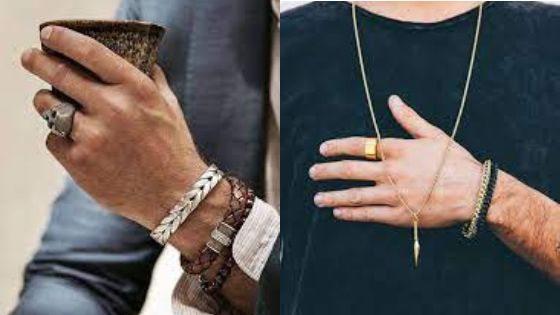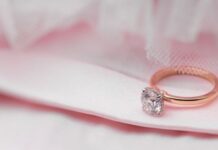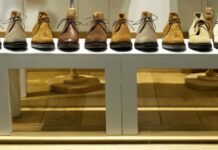Since time immemorial, both men and women’s jewellery have been worn as a demonstration of wealth and power.
Symbols of nature
In Croatia, archaeologists dug up eagle talons from some 130,000 years ago. It is believed that these would have been strung together to as part of a necklace or bracelet, probably worn by a man. In North Africa, prehistoric shells dating back more than 80,000 years have been found with man-made holes drilled through the centre.
The ancient Greeks created wreaths and garlands using greenery that represented the different gods. Zeus was aligned with oak, laurels represented Apollo, and Dionysus stood side by side with grapevines. The wearing of these garlands was allowed according to an individual’s standing in society – usually by those who worked in the army, or in public office. Olive leaves were reserved for consuls and senators.
A crown of thorns
While they symbolised wealth and power, the most negative portrayal of a man wearing jewellery was the crown of thorns crafted for Jesus Christ as he carried his cross to the site of the crucifixion. The crown was a symbol of mocking, making fun of the fact that he claimed to be a king, even though he had no kingdom.
Attracting the gods
The ancient Egyptians saw gold as a way of attracting the attention of the Gods, warding off evil spirits, and providing spiritual guidance. The large, stacked pieces they wore, either as headdresses, bracelets or neck pieces, were believed to make them more attractive to the gods who controlled wealth in the afterlife.
Symbols of superiority, wealth and power
During the middle ages, the disparity between men and women increased. Women were considered inferior, and were removed from positions of power and influence. Men took that power and enhanced it using different types of jewellery and adornments – crowns, sceptres, brooches, rings. The rings were often crafted with a symbol of crest that were used as a wax seal – another indication of power and privilege.
As international travel grew and trade traversed the seas, coloured gemstones became a real status symbol. This was adopted by royalty and the church. The wealthier and more powerful you were, the more colour you had sewn into your clothes, and welded into your accoutrements. This jewellery was worn by men, as an indicator to other men, as to how powerful they really were.
As they crossed the seas delivering these precious gems and stones, pirates and sailors wore their own pieces, usually gold hoop earrings, as a personal life insurance. Should they end up washed up on some distant shore, the gold was meant to be used to give them a Christian burial.
During all these years, the cost of jewellery made it an impossibility for the peasant and working classes to even dream about owning a piece. However, the industrial revolution brought in new manufacturing techniques that allowed designers to create designs that appealed to a much wider audience.
The use of jewellery for men evolved according to customs and cultures across the globe. During the war, gunners would wear earrings attached to wax plugs, which they would insert in their ears to protect their hearing. Arabs pierced their ears because they believed it improved their vision. Archers protected their fingers with a wide ring. Rings were also used as a payment for faithful service. A spiked bracelet was worn as an additional weapon when sword fighting. Wide leather straps were wrapped around forearms to protect the arms against slicing swords.
Today’s 21st man wears his jewellery to demonstrate his wealth, individuality, and social standing – all the while channelling, whether consciously and unconsciously, centuries of history.




















